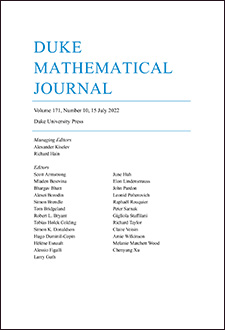Abstract
The product of two Schubert cohomology classes on a Grassmannian ${\rm Gr}_k (\mathbb{c}^n)$ has long been known to be a positive combination of other Schubert classes, and many manifestly positive formulae are now available for computing such a product (e.g., the Littlewood-Richardson rule or the more symmetric puzzle rule from A. Knutson, T. Tao, and C. Woodward [KTW]). Recently, W.~Graham showed in [G], nonconstructively, that a similar positivity statement holds for {\em $T$-equivariant} cohomology (where the coefficients are polynomials). We give the first manifestly positive formula for these coefficients in terms of puzzles using an ``equivariant puzzle piece.''
The proof of the formula is mostly combinatorial but requires no prior combinatorics and only a modicum of equivariant cohomology (which we include). As a by-product the argument gives a new proof of the puzzle (or Littlewood-Richardson) rule in the ordinary-cohomology case, but this proof requires the equivariant generalization in an essential way, as it inducts backwards from the ``most equivariant'' case.
This formula is closely related to the one in A. Molev and B. Sagan [MS] for multiplying factorial Schur functions in three sets of variables, although their rule does not give a positive formula in the sense of [G]. We include a cohomological interpretation of their problem and a puzzle formulation for it.
Citation
Allen Knutson. Terence Tao. "Puzzles and (equivariant) cohomology of Grassmannians." Duke Math. J. 119 (2) 221 - 260, 15 August 2003. https://doi.org/10.1215/S0012-7094-03-11922-5
Information





